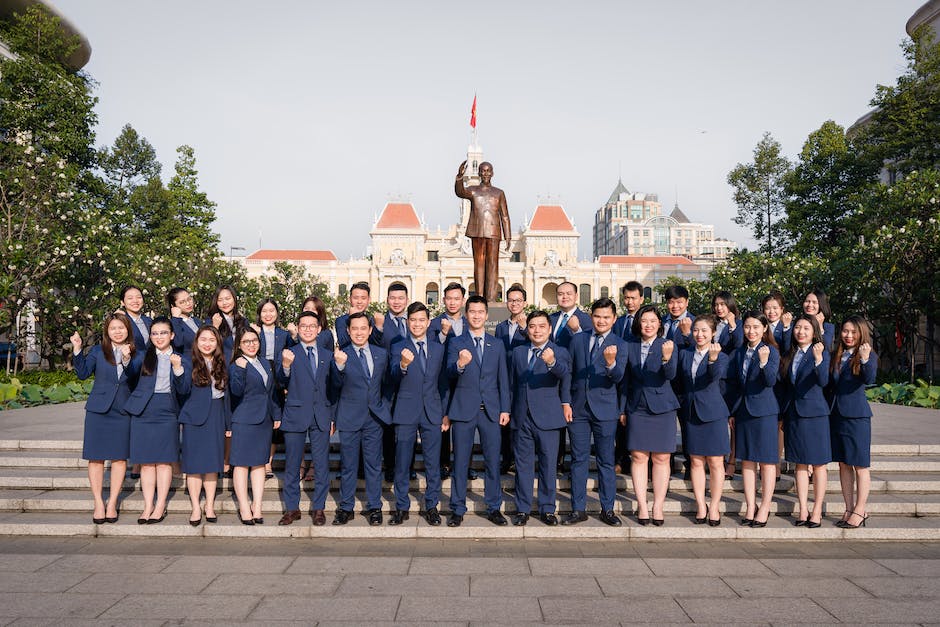Table of Contents
“The Leadership Baton: Unveiling the Walt Disney Company’s Succession Saga”
Introduction
The Leadership Baton: Walt Disney Company’s Succession Saga is a book that delves into the intricate and fascinating story of leadership succession at the renowned Walt Disney Company. This book explores the challenges, strategies, and decisions made by the company’s leaders as they navigated the process of passing on the baton to the next generation of leadership. It provides valuable insights into the complexities of succession planning and the impact it can have on the long-term success of an organization.
The Importance of Succession Planning in Leadership

The Walt Disney Company is a global entertainment conglomerate that has been captivating audiences for decades. From its humble beginnings as a small animation studio in the 1920s, the company has grown into a powerhouse in the entertainment industry. One of the key factors behind Disney’s success is its meticulous approach to succession planning in leadership.
Succession planning is the process of identifying and developing potential leaders within an organization to ensure a smooth transition of power when key executives retire or leave their positions. It is a critical aspect of organizational management that helps maintain stability and continuity in leadership. The Walt Disney Company has recognized the importance of succession planning and has implemented a comprehensive strategy to ensure the long-term success of the company.
One of the key reasons why succession planning is crucial in leadership is the potential impact of leadership transitions on organizational performance. When a leader departs without a clear succession plan in place, it can create uncertainty and instability within the organization. This can lead to a loss of direction, decreased employee morale, and even financial losses. By having a well-defined succession plan, organizations can minimize these risks and ensure a smooth transition of power.
The Walt Disney Company has experienced several successful leadership transitions throughout its history. One notable example is the transition from Walt Disney to his brother Roy O. Disney. When Walt Disney passed away in 1966, Roy took over as CEO and successfully guided the company through a period of expansion and growth. This seamless transition was a result of careful succession planning and the grooming of Roy as a potential successor.
Another important aspect of succession planning is the identification and development of future leaders within the organization. By identifying high-potential employees and providing them with the necessary training and development opportunities, organizations can ensure a pipeline of capable leaders. The Walt Disney Company has a robust talent development program that focuses on nurturing and grooming future leaders. This includes leadership training programs, mentorship opportunities, and rotational assignments that expose employees to different aspects of the business.
Succession planning also plays a crucial role in maintaining organizational culture and values. Leaders are not only responsible for driving business results but also for shaping the culture and values of the organization. When a leader departs, there is a risk of losing the unique culture and values that they have instilled within the organization. By having a succession plan in place, organizations can ensure that the next leader shares the same values and is committed to maintaining the organizational culture.
In conclusion, succession planning is a critical aspect of leadership that helps ensure the long-term success of an organization. The Walt Disney Company’s success can be attributed, in part, to its meticulous approach to succession planning. By identifying and developing potential leaders, the company has been able to seamlessly transition leadership and maintain stability and continuity. Succession planning also helps maintain organizational culture and values, ensuring that the next leader is aligned with the company’s vision. As organizations strive for long-term success, they should prioritize succession planning as a key component of their leadership strategy.
Lessons Learned from Walt Disney’s Succession Journey
The Walt Disney Company is a global entertainment conglomerate that has become synonymous with creativity, innovation, and storytelling. However, behind the scenes, the company has faced its fair share of challenges, particularly when it comes to succession planning. Walt Disney himself was a visionary leader who built the company from the ground up, but his untimely death in 1966 left a void that was not easily filled.
One of the key lessons learned from Walt Disney’s succession journey is the importance of planning ahead. Succession planning is a critical process that ensures a smooth transition of leadership and minimizes disruption to the organization. Unfortunately, Walt Disney did not have a clear succession plan in place at the time of his death, which led to a period of uncertainty and instability for the company.
Another lesson learned from Disney’s succession journey is the need for strong leadership. After Walt’s death, his brother Roy took over as CEO, but he lacked the same creative vision and entrepreneurial spirit that Walt possessed. This lack of leadership resulted in a decline in the company’s creative output and financial performance. It wasn’t until the appointment of Michael Eisner as CEO in 1984 that the company began to regain its footing.
The third lesson learned from Disney’s succession journey is the importance of finding the right balance between creativity and business acumen. Walt Disney was a master storyteller and creative genius, but he also had a keen business sense that allowed him to turn his ideas into successful ventures. Finding a leader who can embody both of these qualities is crucial for the long-term success of the company.
Additionally, Disney’s succession journey highlights the significance of maintaining a strong corporate culture. Walt Disney was known for his hands-on approach and attention to detail, and these values were deeply ingrained in the company’s culture. However, as leadership changed hands, there was a risk of losing this unique culture. It was only through the efforts of subsequent leaders, such as Eisner and later Bob Iger, that the company was able to preserve and build upon its heritage.
Furthermore, Disney’s succession journey underscores the importance of adaptability and innovation. The entertainment industry is constantly evolving, and companies must be able to adapt to changing consumer preferences and technological advancements. Disney has successfully navigated these challenges by embracing new technologies, such as the acquisition of Pixar Animation Studios and the launch of its streaming service, Disney+. These strategic moves have allowed the company to stay relevant and maintain its position as a leader in the industry.
In conclusion, the succession journey of the Walt Disney Company offers valuable lessons for organizations of all sizes and industries. Planning ahead, selecting the right leaders, balancing creativity and business acumen, preserving corporate culture, and embracing adaptability and innovation are all crucial elements of a successful succession plan. By learning from Disney’s experiences, companies can ensure a smooth transition of leadership and position themselves for long-term success.
Analyzing the Impact of Leadership Transitions on Company Culture
The Walt Disney Company is a global entertainment conglomerate that has been a household name for decades. From its humble beginnings as a small animation studio in the 1920s, it has grown into a multi-billion dollar empire, encompassing film, television, theme parks, and merchandise. One of the key factors behind Disney’s success has been its ability to navigate leadership transitions smoothly and effectively.
Leadership transitions are a critical juncture for any organization, as they can have a profound impact on company culture. When a new leader takes the helm, they bring with them their own vision, values, and management style. This can either align with the existing culture or clash with it, leading to potential disruptions and conflicts.
In the case of the Walt Disney Company, leadership transitions have been carefully managed to ensure a seamless continuation of the company’s core values and culture. One of the most notable examples of this was the transition from Walt Disney himself to his brother Roy O. Disney. When Walt passed away in 1966, Roy took over as CEO and successfully steered the company through a period of uncertainty. He understood the importance of preserving his brother’s legacy and maintaining the company’s commitment to creativity and innovation.
Another significant leadership transition occurred in 1984 when Michael Eisner was appointed as CEO. Under Eisner’s leadership, Disney experienced a period of unprecedented growth and expansion. However, towards the end of his tenure, there were concerns that the company’s culture was becoming too focused on profit and losing sight of its creative roots. This led to a contentious transition in 2005 when Eisner stepped down and Bob Iger took over as CEO.
Iger’s leadership style was markedly different from Eisner’s. He prioritized collaboration, innovation, and a customer-centric approach. This shift in leadership had a profound impact on Disney’s culture, as it reinvigorated the company’s creative spirit and refocused its efforts on storytelling and quality content. Iger’s tenure saw the acquisition of Pixar, Marvel, and Lucasfilm, which further solidified Disney’s position as a global entertainment powerhouse.
The most recent leadership transition at Disney occurred in 2020 when Bob Chapek succeeded Bob Iger as CEO. Chapek’s appointment came as a surprise to many, as he was not widely known outside of the company’s theme park division. However, his extensive experience in the company and his focus on leveraging technology and data to drive growth made him a natural choice for the role.
As Disney continues to navigate the challenges posed by the COVID-19 pandemic, Chapek’s leadership will be crucial in shaping the company’s future. It remains to be seen how his leadership style will impact Disney’s culture, but early indications suggest that he is committed to building on the foundation laid by his predecessors.
In conclusion, leadership transitions can have a significant impact on company culture. The Walt Disney Company’s success can be attributed, in part, to its ability to manage these transitions effectively. From the transition from Walt Disney to Roy O. Disney to the more recent handover from Bob Iger to Bob Chapek, Disney has demonstrated a commitment to preserving its core values while adapting to changing times. As the company continues to evolve, its ability to navigate leadership transitions will be crucial in maintaining its position as a global leader in entertainment.
Exploring the Role of Leadership in Sustaining Organizational Success
The Walt Disney Company is a global entertainment conglomerate that has achieved remarkable success over the years. One of the key factors contributing to its sustained success is its effective leadership. The company has had a long history of strong leaders who have guided it through various challenges and transitions. However, the process of leadership succession at Disney has not always been smooth, and the company has faced its fair share of struggles in this area.
Succession planning is a critical aspect of organizational management, particularly for large corporations like Disney. It involves identifying and developing potential leaders who can step into key roles when the need arises. Effective succession planning ensures continuity and stability within an organization, allowing it to navigate through changes and challenges seamlessly. In the case of Disney, the leadership baton has been passed down from one capable leader to another, ensuring the company’s continued success.
One of the most notable successions in Disney’s history was the transition from Walt Disney to his brother Roy O. Disney. Walt Disney, the visionary behind the company, passed away in 1966, leaving a void that needed to be filled. Roy O. Disney stepped up to the plate and took over as CEO, successfully leading the company through a period of expansion and growth. His leadership ensured that Walt Disney’s vision continued to be realized, and the company thrived under his guidance.
However, the succession saga at Disney did not always go smoothly. In the 1980s, the company faced a significant leadership crisis when it struggled to find a suitable successor to CEO Ron W. Miller. This period was marked by a series of unsuccessful leadership transitions, which resulted in a decline in the company’s performance. It was not until Michael Eisner took over as CEO in 1984 that Disney regained its footing and experienced a resurgence.
Eisner’s tenure as CEO was characterized by a focus on creativity and innovation, which led to the development of successful projects like the Disney Renaissance. Under his leadership, the company expanded its reach and diversified its offerings, becoming a global entertainment powerhouse. However, Eisner’s leadership style eventually came under scrutiny, and the company faced another succession crisis when his contract was not renewed in 2005.
The search for a new CEO led to the appointment of Robert Iger, who had been serving as Eisner’s deputy. Iger’s leadership style was markedly different from his predecessor’s, as he focused on collaboration and strategic partnerships. Under Iger’s leadership, Disney acquired several major companies, including Pixar, Marvel, and Lucasfilm, further solidifying its position in the entertainment industry. Iger’s successful tenure as CEO has been marked by consistent growth and profitability for the company.
The leadership succession saga at Disney highlights the importance of effective succession planning and the role of leadership in sustaining organizational success. It demonstrates that a smooth transition of leadership is crucial for maintaining continuity and ensuring that the company’s vision and values are upheld. The success of Disney’s leadership transitions can be attributed to the careful selection and development of potential leaders, as well as the ability of these leaders to adapt to changing circumstances and lead the company through challenges.
In conclusion, the leadership baton at the Walt Disney Company has been passed down from one capable leader to another, ensuring the company’s sustained success. While the company has faced its fair share of struggles in the area of leadership succession, it has ultimately managed to navigate through these challenges and emerge stronger. The success of Disney’s leadership transitions serves as a testament to the importance of effective succession planning and the role of leadership in sustaining organizational success.
Q&A
1. What is “The Leadership Baton: Walt Disney Company’s Succession Saga” about?
“The Leadership Baton: Walt Disney Company’s Succession Saga” is a book that explores the succession challenges faced by the Walt Disney Company and the strategies employed to ensure a smooth transition of leadership.
2. Who is the author of “The Leadership Baton: Walt Disney Company’s Succession Saga”?
The author of “The Leadership Baton: Walt Disney Company’s Succession Saga” is Michael D. Eisner, the former CEO of the Walt Disney Company.
3. What are some key themes discussed in “The Leadership Baton: Walt Disney Company’s Succession Saga”?
Some key themes discussed in the book include the importance of effective succession planning, the challenges of maintaining a strong corporate culture during leadership transitions, and the impact of leadership changes on the overall success of a company.
4. What can readers learn from “The Leadership Baton: Walt Disney Company’s Succession Saga”?
Readers can learn about the complexities and intricacies of succession planning in a large corporation, gain insights into the leadership strategies employed by the Walt Disney Company, and understand the importance of continuity and stability in maintaining a successful business.
Conclusion
In conclusion, “The Leadership Baton: Walt Disney Company’s Succession Saga” provides a comprehensive analysis of the succession challenges faced by the Walt Disney Company. It highlights the importance of effective leadership transition and the impact it can have on the long-term success of a company. The book offers valuable insights into the complexities of succession planning and the strategies employed by Disney to navigate these challenges. Overall, it serves as a valuable resource for understanding the intricacies of leadership succession in a corporate setting.




